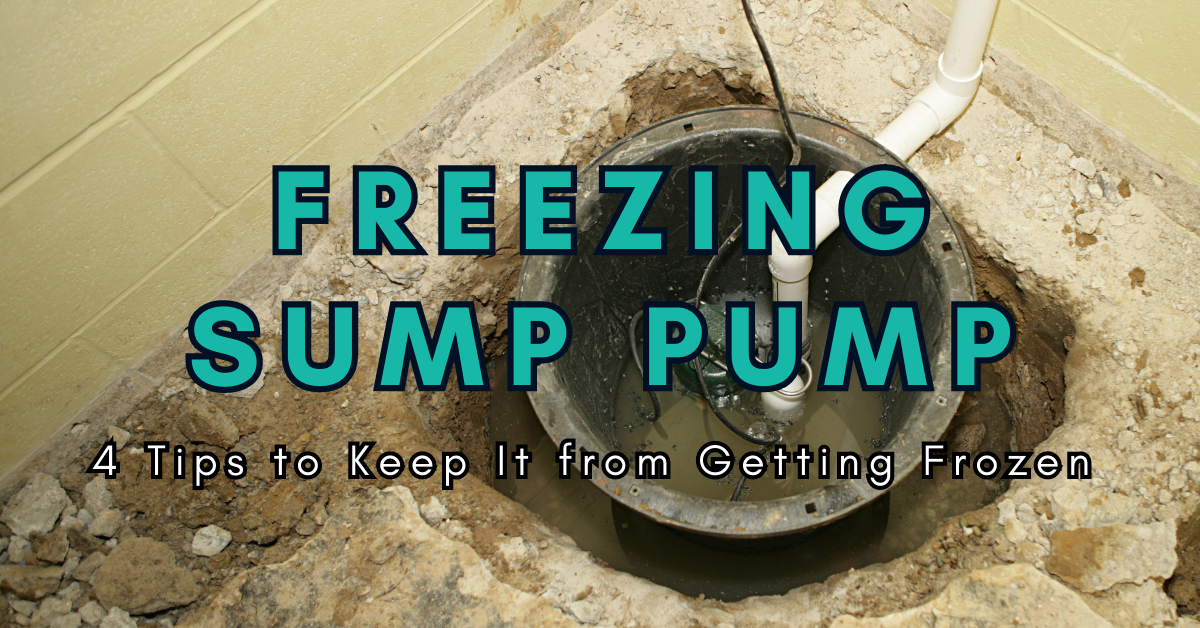 If you live in an area where it has particularly wet weather, having a sump pump can save your home from dealing with flooding. A sump pump functions to remove all excess water in your basement. However, just like plumbing winter problems, your sump pump discharge line can be at risk of freezing during winter months. When this happens, your sump pump has to work harder and may lead to damage due to overheating. When a freezing sump pump is left untreated, water accumulated in your basement cannot only damage your sump pump but it can lead to severe and costly water damage problems.
If you live in an area where it has particularly wet weather, having a sump pump can save your home from dealing with flooding. A sump pump functions to remove all excess water in your basement. However, just like plumbing winter problems, your sump pump discharge line can be at risk of freezing during winter months. When this happens, your sump pump has to work harder and may lead to damage due to overheating. When a freezing sump pump is left untreated, water accumulated in your basement cannot only damage your sump pump but it can lead to severe and costly water damage problems.
Avoid freezing your sump pump discharge line in the cold season by following these helpful tips. Keep your sump pump discharge line from freezing during this cold season with these helpful tips.
Tips To Avoid a Freezing Sump Pump
-
Inspect The Area Of Your Sump Pump Regularly
Checking your sump pump and the surrounding areas is important to make sure that your sump pump is working properly. Inspect the area where the discharge line is directing the water. Remove any blockage or obstructions like debris, snow, or ice. Moreover, make sure that your sump pump does not discharge water on your sidewalk or driveway which can eventually cause a dangerous icy or freezing sump pump condition.
-
Insulate the Sump Pump Discharge Line and The Intake Section
To prevent your sump pump from freezing, it’s important to insulate both the discharge line and intake section. Insulation helps keep the water warm and ensures smooth flow. Here are a few options to consider. One simple method is to cover the outside pipe with hay and a tarp, as hay acts as a natural insulator. Alternatively, you can purchase a larger diameter pipe from a local hardware store and attach it to the end of your sump pump hose using wires or clamps. Make sure to leave an air gap between the larger pipe and the hose.
Never use automotive anti-freeze in your sump pump.
Insulation can also help to keep the parts of your sump pump from getting damaged by external elements and contain the leaks that might be existing.
By doing so, you can stop having a freezing sump pump.
-
Keep Your Water Running
It is already expected that water freezes during cold weather, but water also freezes when it doesn’t move. When water cannot discharge throughout your home, the water inside your sump pump will more like to freeze. In this case, your sump pump will not function properly. Moreover, it is also a good idea to redirect excess water away from your sump pump to prevent it from overworking. By this, you can lower the risk of having a freezing sump pump discharge line.
-
Bury Your Sump Pump Discharge Line
Burying your sump pump pipe under the yard can protect it from the biting cold blaze and accumulated snow which can help in reducing the risk of having a freezing sump pump. You should bury your pipe at least 12 centimeters beneath the frost line. Generally, the pipe freezes when the pipe meets the ground at the frost line and the water sits at the end of the pipe.
Moreover, if you prefer an above-grade solution, you can add a slight slope on the discharge line away from your home. The slope doesn’t need to be steep, but it should be constant so water can flow freely. Connect a freeze-resistant hose at the end of the discharge hose and make sure that the water discharges for at least 6 meters far from your foundation. Gravity will do the work instead to keep water from flowing continuously.
What To Do If The Sump Pump Pipe Is Frozen
There are times when we can’t just simply avoid having a freezing sump pump. when this happens, it is important that we know exactly the first things to do.
Here are simple steps to unthaw a frozen discharge line or a freezing sump pump.
- Cut off the power supply to the freezing sump pump.
- Check the area where the water discharges and look for snow or ice that causes a blockage to the end of the line. Remove the blockage.
- Set up portable heaters. If you suspect the ice is near the end of the pipe, you can thaw it by using portable heaters. Set it on for about an hour. Using a blow torch to melt ice should never be attempted as it can harm your property and lead to injuries.
- Empty the sump pump pit. If using a portable heater cannot resolve the problem, you can use a submersible pump or a wet/dry vacuum to empty the sump pump pit. If needed, manually bail out the water using a cup and a bucket.
- Detach the discharge line from the pump. Using a drench or a screwdriver, loosen the line to the pump.
- Pour some boiling water into the freezing sump pump line. This will take several attempts. Continue pouring boiling water into the line to thaw the ice. The water should flow freely to make sure that the line is not free from freezing.
- Seek professional help. If thawing it on your own is not an option to take, contact professionals, to thaw out the frozen discharge line.
Making sure that your sump pump will call to action when needed is crucial to keep your home from experiencing water damage problems or related issues. But in case of water damage to your property; don’t hesitate to contact Water Damage Irvine. We stand ready to provide quality and professional flood and water damage restoration services. Please call us today.




